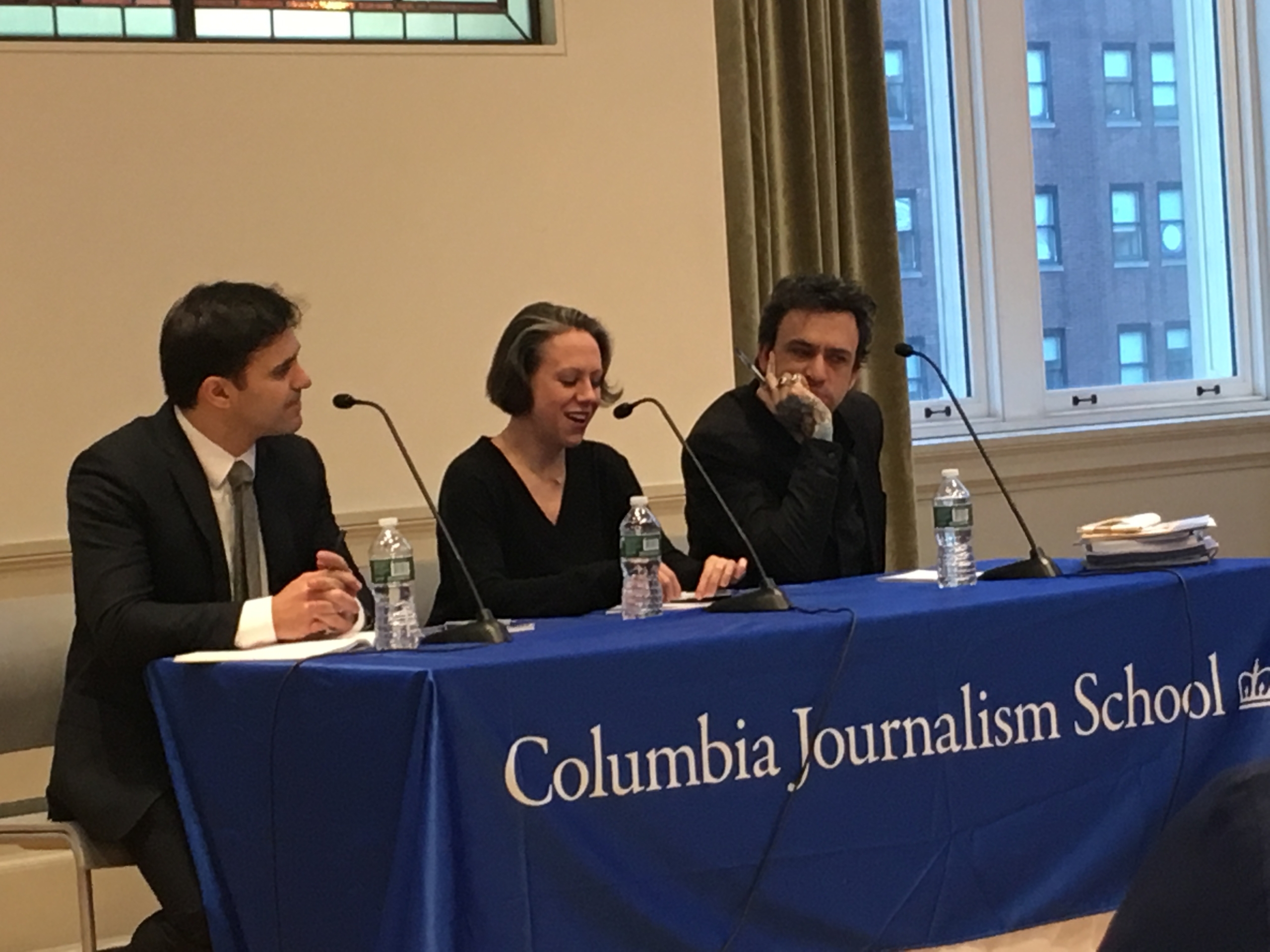Sign up for The Media Today, CJR’s daily newsletter.
Good journalism is simply not enough to sustain magazine revenue these days, according to two business-side veterans who spoke at a panel at Columbia Journalism School on Monday. “Magazines don’t make sufficient money just by producing a magazine,” says David Rose, publisher of the history-focused literary magazine Lapham’s Quarterly. “You have to do all kinds of tricks and goodies to make it break even.”
Rose joined Hillary Frey, a consultant for the Huffington Post with priors including NBC News, The Nation, and Salon, for a cozy conversation about the magazine industry’s evolving business models. Rose and Frey said many publications are facing dismal prospects, and neither sounded anything resembling an upbeat tone about the future.
“Our massive mistake when the Internet started with journalism—why it was given away for free,” says Frey. “It’s not a public resource. It costs a lot of money to do good journalism.”
If more readers realized how much they value the work and decided to pay for it, news would become more profitable, Rose said. “Readers just want too much for too little,” he added. Readers including Rose, apparently: He told the audience he was a proud subscriber to a couple of publications like The New York Times and The Guardian. But after a year, “I haven’t renewed one of those things, and I’m a publisher,” he said. “I know what it means to those organizations that have that, and I can’t be bothered doing it. No wonder these places are in trouble.”
Rose did not say why he hadn’t renewed his subscriptions, nor explain why his own decisions as a consumer might portend doom for magazines. His own magazine charges subscribers $49 per year for a print subscription and $59 for a print-and-digital package.
After poo-pooing the prospects of the magazine business model, the speakers highlighted some alternative models publications are using—aside from the usual advertising model (though they noted most are repackaged or unsustainable long-term). Those include:
- Print magazines sharing and renting subscriber lists. Rose noted that Lapham’s Quarterly makes about $25,000 per year from renting its list. Gaining access to competitors’ lists is key because it allows publications to target an audience that is already interested in magazines and willing to subscribe.
- Digital outlets turning to venture capitalist funding in the hopes of eventually selling to a bigger publishing players or strategic investors. This model works by growing a publication’s audience, so large segments of it can ultimately be monetized. Advertisers end up working with these publications to produce advertorials and branded content based on the type of readers attracted to the site. Frey noted that the editorial side likes to hype the moral wedge between them and business. That said, a different team is getting paid to basically do the same work. “It can be just as beautiful and just as good as something that’s purely produced by editorial,” Frey said.
- Publishing a few special interest issues per year. Deaths and anniversaries serve as a great opportunity to use this model. One example was an Alexander Hamilton-themed issue of Lapham’s Quarterly, timed to the success of the musical Hamilton. By recycling content, magazines benefit from lower production costs. Also, these issues normally have a longer shelf life, which translates into more time to make money off of them.
- Hosting events and selling merchandise featuring the brand. “The advent of the literary tote bag is what sustains literary magazines in Brooklyn,” Rose joked.
- Transitioning to a scholarly publication to attract experts that want to keep up to date on the publication’s coverage. Known as the white-paper model, these publications are typically ad free, but cost much more to subscribers. This circles back to an earlier point, that readers who are invested or really care about a magazine’s subject matter are more likely to invest.
Has America ever needed a media defender more than now? Help us by joining CJR today.



